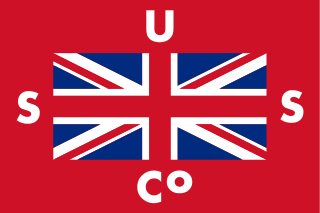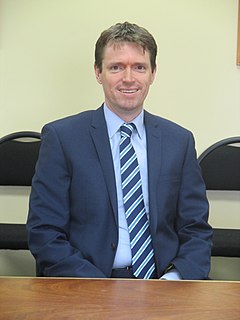
West Coast Railways (WCR), is a railway spot-hire company and charter train operator based at Carnforth MPD in Lancashire. Using buildings and other facilities previously owned by the Steamtown Carnforth visitor attraction, in June 1998 the company became the first privately owned company to be given a licence as a train operating company. Subsequently it was prohibited from running on mainlines for a period due to safety concerns

Under the Whyte notation for the classification of steam locomotives, 0-6-4 represents the wheel arrangement of no leading wheels, six powered and coupled driving wheels on three axles, and four trailing wheels on two axles.
Kitson and Company was a locomotive manufacturer based in Hunslet, Leeds, West Yorkshire, England.

The Plains Vintage Railway & Historical Museum is a heritage railway and recreated historic village located inside the Tinwald Domain, Tinwald, New Zealand. The railway operates on approximately three kilometres of rural railway line that once formed part of the Mount Somers Branch. The entire village site and the railway are open regularly to the public, the railway operation utilises preserved and restored locomotives and rolling stock once used on New Zealand's national railway network while the village allows people to see how life was lived in New Zealand's pioneering past.
The following lists events that happened during 1912 in New Zealand.
The New Zealand Railways Department, NZR or NZGR and often known as the "Railways", was a government department charged with owning and maintaining New Zealand's railway infrastructure and operating the railway system. The Department was created in 1880 and was corporatised on 1 April 1982 into the New Zealand Railways Corporation. Originally, railway construction and operation took place under the auspices of the former provincial governments and some private railways, before all of the provincial operations came under the central Public Works Department. The role of operating the rail network was subsequently separated from that of the network's construction. From 1895 to 1993 there was a responsible Minister, the Minister of Railways. He was often also the Minister of Public Works.
The Melbourne and Essendon Railway Company built a railway line from North Melbourne in Melbourne, Australia to Essendon in 1860. It subsequently built a branch line from Newmarket to Flemington Racecourse in 1861. The company was taken over by the Government of Victoria in 1867 and it became part of Victorian Railways.

A steam bus is a bus powered by a steam engine. Early steam-powered vehicles designed for carrying passengers were more usually known as steam carriages, although this term was sometimes used to describe other early experimental vehicles too.

Union Steam Ship Company of New Zealand Limited —when there was no chance of confusion casually referred to as Union, Union Company, Union Steam Ship Company, or Union Line— was once the biggest shipping line in the southern hemisphere and New Zealand's largest private-sector employer. It was incorporated by James Mills in Dunedin in 1875 with the backing of a Scottish shipbuilder, Peter Denny. Bought by shipping giant P & O around the time of the First World War it was sold in 1972 to an Australasian consortium and closed at the end of the twentieth century.
George Forrester and Company was a British marine engine and locomotive manufacturer at Vauxhall Foundry in Liverpool, established by Scottish engineer George Forrester. The company opened in 1827 as iron founders and commenced building steam locomotives in 1834.

Real Journeys is a major South Island and New Zealand award-winning tourism company, privately owned by the Hutchins family since 1954. It operates world renowned cruises in Milford and Doubtful Sounds, the legendary vintage steamship TSS Earnslaw on Lake Wakatipu, the Te Anau-au glowworm caves, Stewart Island ferry services, excursions and lodge accommodation as well as Cardrona Alpine Resort and the International Antarctic Centre and is recognised as one of the most influential contributors to the country’s international tourism profile.
A & G Price was an engineering firm and locomotive manufacturer in Thames, New Zealand, from 1868. A few months short of 150 years after it was founded its then owner was put into liquidation on 26 July 2017. About 100 employees lost their jobs.

Mount Earnslaw, also known by its Māori name of Pikirakatahi, is a 2,819-metre (9,249 ft) mountain on New Zealand's South Island. It is named after Earnslaw village in the parish of Eccles, Berwickshire, hometown of the surveyor John Turnbull Thomson's father.

The Wellington and Manawatu Railway Company was a private railway company that built, owned and operated the Wellington-Manawatu railway line between Thorndon in Wellington, the capital of New Zealand, and Longburn, near Palmerston North in the Manawatu, between 1881 and 1908, when it was acquired by the New Zealand Government Railways. Its successful operation in private ownership was unusual for early railways in New Zealand.

The NZR WJ class was a class of one steam locomotive built by Baldwin Locomotive Works for service on New Zealand's private Wellington and Manawatu Railway (WMR). She acquired the WJ classification when the publicly owned New Zealand Railways Department (NZR) purchased the WMR and its locomotive fleet in 1908.
New Conservative is a conservative political party in New Zealand. It advocates lower taxation and reduced government spending, and also supports agrarian and social conservative issues.

Colin Craig is a New Zealand businessman who was the founding leader of the Conservative Party of New Zealand.
A builder's plate is usually a metal plate that is attached to rolling stock, bogies, construction equipment, trucks, automobiles, large household appliances, bridges, ships and more. It gives such information as the name of the manufacturer, the place and country of manufacture, the model number, the serial number, as well as the date of manufacture or date of fabrication of the item or unit.

The Northern Steam Ship Company Ltd (NSS) served the northern half of the North Island of New Zealand from 1881 to 1974. Its headquarters, the Northern Steam Ship Company Building, remains in use on Quay St, Auckland as a bar.













